Maltster Startup Guide
*Advice compiled from MSU barley lab experience and from a presentation given by Ryan Hamilton, previously of Pilot Malt House in Michigan
Advice in securing your grain:
-Encourage contracts – they protect all parties involved
-Specifically outline your quality assurance programs and ensure producer understands them
-Malting barley requires thoughtful management during growth and at harvest
AMBA Guidelines and recomendations for malting barley harvest
-Will the grain be cleaned or processed before arriving to your malthouse? Who will test quality of the grain?
-Address storage and transportation concerns as early as possible
-Who will store the grain? Segregation of barley lots is key. How will grain viability and quality be monitored in storage?
Grain viability based on time, temperature and moisture
Example Grain Production Contract:
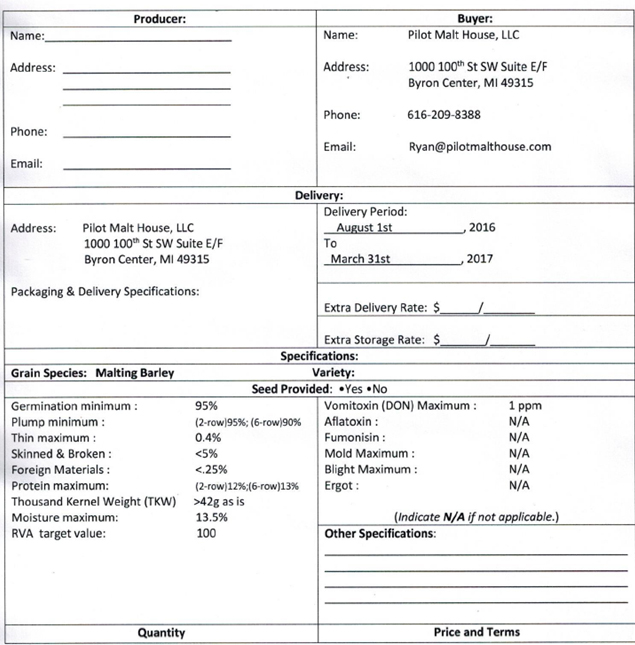
Developing Malt Recipes:
Many sources of variation which effect your end product exist, it is important to consider these and make appropriate adjustments to your recipes. An in house lab is critical for building awareness and making timely recipe modifications.
Sources of potential variation:
-Barley variety
-Plumps, skinned/broken seed, weed seeds and other contaminations
-Grain moisture and storage
-Growing environment, ie – dryland/irrigated, year to year stresses, fertility, farmer to farmer management
-Protein level – impacts enzyme levels of malt and potentially grain moisture uptake
-Germinative capacity, energy, and grain water sensitivity
-Malt house water quality, ie pH, hardness, temperatures etc.
-Malt house style & equipment, ie floor malting, small/large scale, automation etc.
-Chosen recipe, ie duration and quantity of air rests, temperature, aeration, humidity, agitation, length of germ, kilning
It is important to become familiar with your facility, its advantages and limitations and learn how to adapt these qualities to best suit the grain you source and your desired end product. The art of the maltster is taking variable grains and creating a consistent and reliable product.
Malt Certificate of Analysis - Interpretation and Process Troubleshooting Guide
The above document is from the Malster's Perspective
It may also be useful to also consider the Malt COA from the brewers perspecitve
Quality Assurance – Building an In-House Lab
Analysis which should be performed in house:
-Moisture: both grain and malt moisture update through process
In addition to gross moisture %, assesment of hydration quality should be done via hydration index
-Kernel Assortment
-Germinative Capacity, Germinative Energy, and Water Sensitivity
NIR Technology is the most efficient and expedient method for protein evaluation. This analyzer is quite expensive so in house measures are typically not practical for maltsters - but you may be able to get regular measures via a local grain elevator or quality lab.
*Some protocols are described below and/or within this website, others accessible through the American Society of Brewing Chemists – a membership is recommended.
Suggested Equipment:
Bunn G1 Commercial Coffee Mill

-easy to use
-uses two rotating discs to grind sample to uniform particle size
-reliable and durable
-can be used to mill raw grain or malt samples for:
-moisture analysis (in combination with an oven)
-rapid color assessment
~$800
Alternative option -
Baratza Virtuoso+ Conical Burr Coffee --~$250. This option is less comercial and likely less long lived - but a good option.
AgraTronix MT-16 Grain Moisture Tester
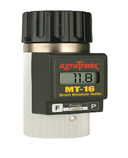
-easy to use, portable/durable
-reasonably reliable for raw grain testing
-unreliable for malting processes (testing moisture at steep, germ, kiln)
-$170
A&D MX-50 Moisture Analyzer
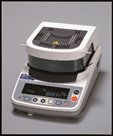
-easy to use
-Accurate & precise
-Can be used with all processes (raw grain intake, steeping, germ, kiln, finished malt)
-Costly, but “absolutely critical to success”
-$2800
Kernel Assortment – ASBC Malt & barley screens
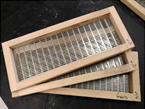
-easy to use
-can be used for raw and malted barley
-Three screen sizes commonly used: 7/64”, 6/64”, and 5/64”.
-$190/screen, $450/set of 3, $750/set of 6
Germinative Capacity (Hydrogen peroxide method), Energy & Water sensitivity
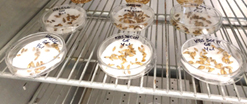
Materials:
-Petri dishes (2) – 90mm
-glass options are more expensive initially, but fit filter paper better and are more cost effective long term
-Qualitative filter papers (4) – 80mm (Whatman No. 1 or equivalent)
-Graduated pipette – 10mL
-Volumetric flask – 200mL
-Hydrogen peroxide, mixed to 0.75% with distilled or deionized water
-Typically you can find 3% at the drug store or 30% through scientific vendors
Tests are easy to perform, and essential to success
-Inexpensive, lab ware/filter paper can be purchased through online retailers, bulk discounts often available
Scale – Ohaus ranger 3000

-easy to use
-portable and durable
-$400
-Measures to 0.05g. Be concious of what tests you will perform and if this measure is fine enough for your needs
Additional Testing:
Friability – Pfeuffer friabilimeter
-easy to use
-used to indirectly asses degree of modification of finished malt
-provides extremely valuable insight
-$7,000
-Instruction friabilimeter video can be found here
Color Analysis – Thermo Fisher Scientifice Genesys 10S Vis Spectrophotometer
-easy to use
-Used to asses wort color by means of ASBC “Quick Color Method”
-results can be validated agains outside lab to increase accuracy and monitor precision
-$3,500
*Be very concious of your needs - a spec offering just the visable spectrum (Vis models) will measure color but if you think you may be interested in more advanced testing options - like soluble protein you will need a model that can also measure in the UV range (UV-Vis models).
Other general tips for success:
-Take copious notes on your malting process and track measurments (example tracker built in Excel)
-Identify the problematic factors in your finished malt analysis
-Adjust your process as needed to attempt to rectify the outcome
-Enviormental factors and/or inherent characteristics fo the barley varieties you are using may impede target goals
-Join associations such as the Craft Maltsters Guild for more information
-Attend short courses such as those put on by NDSU, CMBTC, and The Craft Malster's Guild
Protocols:
Moisture Uptake:
Obtain starting moisture of grain via oven drying or an NIR evaulation
Use a teaball/teabag or something similar to contain a pre-weighed amount of grain.
Subject sample to your malting process – pull samples at desired intervals, ie 24hrs into steep or at steep out etc.
Re-weigh grain to determine grain moisture:
Calculation: (current sample weight – original grain weight)/(current sample weight)
Example:
You started with 10g of grain that was 9.8% moisture and at 24 hrs the grain weight had increased to 15g
Original moisture = 10*0.098 = 0.98g
Original grain weight = 10 – 0.98g = 9.02g
(15g – 9.02g))/15 = 0.398
The grain is at 39.8% moisture at 24hrs. Use this knowledge along with your goal moisture to adjust your program.
*This process could also be done using a moisture meter such as the A&D MX 50 above, removing the need to have pre moisture and weight.
Hydration Index/Chapon Test:
Remove a portion of grain (ideally 100 seeds) from select points during your steeping process – for example at steep out and 24hrs into germination.
Boil the grains for 60 seconds – can be done quickly by placing the grains in a small volume of water and microwaving
Remove the grains from the water and cut them lengthwise
Areas of the endosperm which are white and starchy have not been hydrated, areas which are translucent and darker in color have been hydrated. The compounds responsible for modification are hydrolytic and therefore your goal for best modification is to get good/even endosperm hydration.
Seeds can be scored from 0, ¼, ½, ¾, 1 according to hydration. Each grain gets a score of 0-4 based on level of hydration and a Steep Index score can be calculated for easy record keeping.
Example Chapon test performed with 25 seeds for 16 different lines:
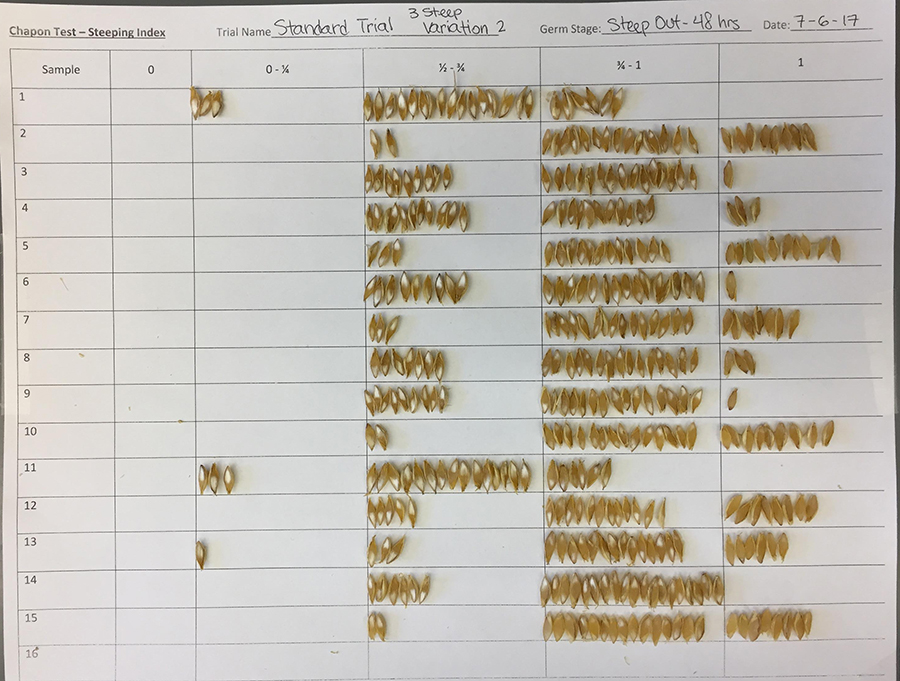
Parameters which can effect hydration: barley variety, grain protein, water temp, and steeping regime
Other protocols available through ASBC:
Germination: Suggested to use Germination Barley-3 C: Germ Energy, Germ Capacity, and Water Sensitivity simultaneous. We have found that simply adding hydrogen peroxide to petri dishes as described in Barley-3 C can mis-represent germination capacity. Alternatively we add seeds not germinated after 3 days germination in 4mLs water to a 50mL tube filled with 0.75% persoxide, similar to as describe in Barley-3 B.
Malt Moisture: ASBC Barley-5 and Malt-3. Method utilizes milled grain/malt and oven or an NIR analyzer
Physical tests: Barley-2, Malt-2, assortment, skinned and broken etc
Friability: Malt-12
Hot steep sensory evaluation of malt flavor: Sensory Analysis-14
Rapid Malt Color: Wort-25, microwave method. Color can also be assesed on hot steep sensory worts.
Grist Assestment: Malt-15. Very helpful when inevitably trouble shooting with your clients.
++many other protocols having to do with analysis of malt, beer, hops and more are available
American Society of Brewing Chemists

